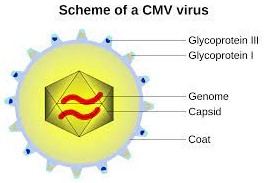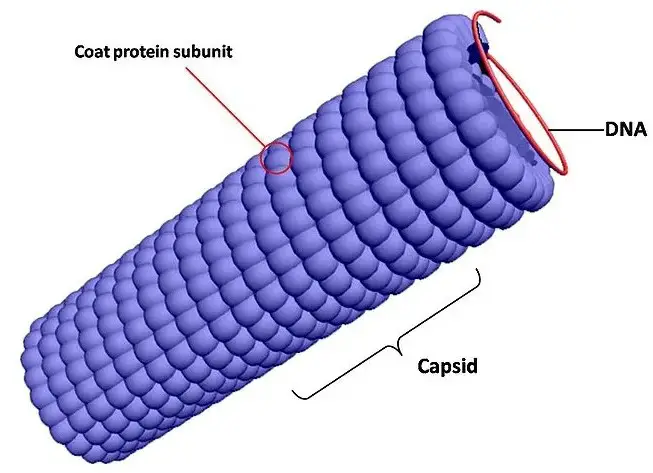In this blog, we will explore the differences between a capsid and a nucleocapsid. A capsid is a protein shell that encloses the genetic material of a virus, while a nucleocapsid is a complete virus particle, which contains both the capsid and the virus’s genetic material. We will discuss the structure, composition, and function of each of these components and explain how they differ.
We will discuss the structure, composition, and function of each of these components and explain how they differ.
What is capsid

A capsid is the outer shell of a virus particle, made up of proteins and sometimes polysaccharides, that protects its core of genetic material (DNA or RNA). On the other hand, a nucleocapsid is the core of a virus particle, which consists of the viral genome (DNA or RNA) surrounded by a protective protein layer known as the capsid. In other words, the nucleocapsid is the inner structure of a virus, while the capsid is the outer shell that protects the nucleocapsid.
While the capsid can exist on its own, it needs the nucleocapsid to form a complete virus. Thus, the capsid and nucleocapsid are two distinct components of a virus that work together to form a complete virus particle.
What is nucleocapsid

The difference between capsid and nucleocapsid is that a capsid is the outer protein shell of a virus, whereas a nucleocapsid is a capsid that contains the virus’s genetic material. A capsid is composed of several proteins that form a protective covering around the nucleic acid. The capsid is responsible for keeping the virus’s genetic material safe and helping it to survive and replicate.
On the other hand, a nucleocapsid contains the virus’s genetic material, usually a single strand of DNA or RNA. The nucleocapsid is surrounded by the capsid proteins, and together they form a protective capsule that prevents the virus from being destroyed by the environment.
In summary, the capsid provides the outer protective shell, while the nucleocapsid contains the virus’s genetic material.
Comparison of capsid and nucleocapsid

The difference between a capsid and a nucleocapsid lies in the type of material each is made of and the purpose they serve. A capsid is a shell structure made up of protein molecules that surrounds a virus or a bacteriophage. Its primary purpose is to protect the virus or bacteriophage from the environment and also to help it attach to its host cell.
Its primary purpose is to protect the virus or bacteriophage from the environment and also to help it attach to its host cell. A nucleocapsid, on the other hand, is made up of both protein and nucleic acid molecules. Its main function is to protect the genetic material of the virus or bacteriophage from the environment and to help them replicate.
In addition, the nucleocapsid also helps the virus or bacteriophage attach to the host cell. Both capsids and nucleocapsids are essential components of viruses and bacteriophages, and their differences are what make them play such an important role in the life cycle of these microscopic organisms.
Structural differences between capsid and nucleocapsid
The capsid and nucleocapsid are two distinct structures within a virus, but they have a lot of similarities. Both are composed of proteins, and both provide protection for the virus’s genetic material. However, there are some structural differences between the two.
However, there are some structural differences between the two. The capsid is made up of protein subunits called capsomeres, which form a shell around the nucleic acid, while the nucleocapsid is composed of nucleic acids, such as DNA or RNA, and proteins that bind the nucleic acid. The capsid is responsible for the virus’s shape and helps it to attach to a host cell, while the nucleocapsid is responsible for protecting the virus’s genetic material and packaging it for delivery.
In summary, the capsid and nucleocapsid are both essential for a virus, but they have different structures and functions.
Function of capsid and nucleocapsid
The difference between a capsid and a nucleocapsid is an important concept to understand when it comes to viruses. The capsid is the protein shell that encapsulates the genetic material of the virus. The nucleocapsid is made up of the viral capsid and the genetic material it contains, usually in the form of DNA or RNA.
The nucleocapsid is made up of the viral capsid and the genetic material it contains, usually in the form of DNA or RNA. In other words, the capsid is the outer layer of the virus and the nucleocapsid is the inner layer that contains the genetic material. The capsid is responsible for protecting the virus from the outside environment, while the nucleocapsid is responsible for protection the viral genetic material from damage.
Summary of difference between capsid and nucleocapsid
The difference between capsid and nucleocapsid is an important one to understand. A capsid is the protein shell that encloses the genetic material of a virus. It is made up of multiple protein subunits and typically has an icosahedral shape.
On the other hand, a nucleocapsid is the combination of the nucleic acid together with the capsid. The nucleic acid can be either DNA or RNA, and its purpose is to protect the genetic material.
In essence, the capsid is the protective outer shell of the virus, while the nucleocapsid contains the viral genetic material.
Conclusion
In conclusion, the major difference between capsid and nucleocapsid is that capsid is a protein shell that is made up of subunits known as capsomers, whereas nucleocapsid is a capsid that contains the genetic material of a virus. Capsids protect the genetic material and help the virus to replicate and spread, while nucleocapsids contain the genetic material that directs the activities of the virus.

